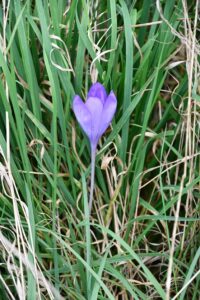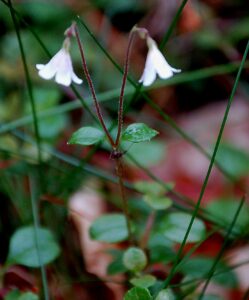2022 County Report for South Northumberland
Megs Rogers & John Richards
Projects and field work
Our slant on the England LORE project is to each year provide a list of rare or under recorded plants to be re-found and looked for and a number of new sites have been reported including for Trollius europaeus (Globe Flower). Habitat recording continued in ancient woodland (this will now link with the ERIC North East Ancient Woodland Inventory Project) and on limestone outcrops where good numbers of plants such Scabiosa columbaria (Small Scabious) were found despite extensive sheep grazing. Collaboration continues with local organisations and a link made with a new large Encouraging Wildness project on an estate. General recording has started to increase again and together with local botanists over 9000 records have been made. Interesting finds are published by AJR in the vc67 Newsletters which are on the new website.
Chris and Hazel Metherell organized the Citizen Science Discovering North East Orchids through the Natural History of Northumbria and local botanists helped with visits, recording and species accounts.
New initiatives
The first outing for local members took place in September with a visit to the coast and rare lowland heath and further ones will be arranged. James Common has just set up a much needed and excellent website for Botany in Northumberland https://northumberlandbotany.co.uk/ and he has also started a new Northumberland Botany Group to encourage younger botanists, beginners and cross-generational learning while out recording.



